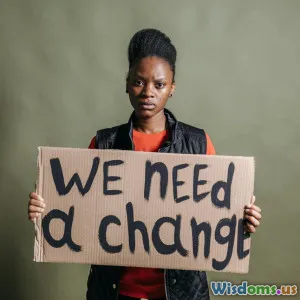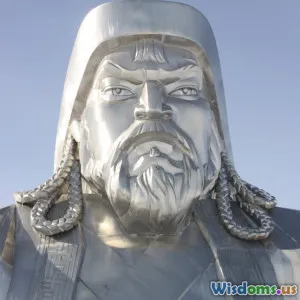Cultural Icons and Their Impact
7 min read Explore how cultural icons shape societies, influence art, and inspire global change through history. (0 Reviews)Cultural Icons and Their Impact
Culture is a living, breathing entity shaped by collective human experience, but within it, certain individuals emerge as cultural icons—figures whose influence not only reflects but redefines the zeitgeist. These icons transcend their own life spans and resonate across generations, inspiring art, social movements, and identity itself. This article explores the profound impact of cultural icons throughout history, illustrating their significance in shaping both individual and collective consciousness.
What Makes a Cultural Icon?
A cultural icon is more than a celebrity or a notable historical figure. An icon embodies ideals, emotions, and movements, becoming a symbol by which societies orient their values. According to cultural theorist Stuart Hall, cultural icons function as "sites of negotiation" that invite diverse interpretations while maintaining a recognizable identity.
Icons are often associated with exceptional achievement or powerful representation in areas like art, politics, fashion, or social advocacy. Crucially, an icon's significance grows because they catalyze change or offer new ways of seeing the world.
Example: Frida Kahlo
Frida Kahlo transcended her identity as just a Mexican painter to symbolize resilience, feminism, and Mexican cultural pride. Her vivid self-portraits and unapologetic representation of disability and indigenous heritage formed a powerful narrative challenging societal norms.
Her words, “Feet, what do I need you for when I have wings to fly?” encapsulate a spirit of transformation and defiance that resonates globally decades after her death.
Historical Influence of Cultural Icons
Cultural icons have been pivotal in historical movements and social transformations. Their visibility and the narratives attached to them help shape public consciousness and can mobilize collective action.
Icons as Catalysts for Social Change
Martin Luther King Jr. in the U.S. civil rights movement symbolizes the power of peaceful protest and equality. His "I Have a Dream" speech continues to inspire civil rights activism worldwide.
Landing a knighthood for his influence in modern music, David Bowie revolutionized not only sound but identity politics through fluid gender expression and boundary-defying artistry, influencing cultural acceptance.
In a different political realm, Che Guevara remains a global symbol of rebellion and anti-imperialist movements. Although controversial, his iconic image from Alberto Korda’s photograph sparked resistance movements far beyond Latin America.
The Role of Media and Technology
The rise of radio, television, and ultimately the internet dramatically amplified the reach of cultural icons. For example, the Beatles benefited greatly from television to pioneer the British Invasion, reshaping global music culture.
In the digital age, influencers such as Malala Yousafzai demonstrate how icons leverage social media to advocate for education and women’s rights on a global stage.
Cultural Icons and Global Identity
Icons often serve as emblems of collective identity. They provide a mirror reflecting societal values and aspirations while inspiring individual and cultural pride.
National Identity and Cultural Pride
Mahatma Gandhi, often regarded as the father of Indian independence, embodies nonviolent resistance and moral courage. His image and philosophy are deeply interwoven with Indian cultural pride.
Similarly, figures like Nelson Mandela represent struggles for freedom and reconciliation, affirming South Africa’s complicated yet hopeful narrative.
Cross-Cultural Influence
Beyond localized meanings, cultural icons frequently become global symbols. Japanese filmmaker Akira Kurosawa’s films influenced both Eastern and Western cinema, bridging cultural divides and minds.
Icons also serve as agents of cultural exchange. B-Boying pioneers in the Bronx promoted hip hop, originating in African American communities, to global audiences, launching a worldwide cultural phenomenon.
The Enduring Legacy of Cultural Icons
The longevity of a cultural icon’s relevance depends on the continual reinterpretation and resonance their image or work has with new generations.
Institutions and Memorialization
Museums, festivals, and monuments help sustain icons’ legacies. For instance, the Museum of Modern Art preserves and promotes artists like Picasso, whose work challenged artistic conventions, influencing countless successors.
Merchandise and Popular Culture
Hollywood’s portrayal of superheroes like Batman merges myth with commerce, creating modern archetypes that influence moral ideals and cultural storytelling.
Museums and academic studies ensure that icons are not confined to nostalgia but instead central to ongoing cultural dialogues.
Conclusion: Why Cultural Icons Matter
Cultural icons provide more than inspiration—they are key to understanding social values, historical shifts, and collective identity. Their impact is visible not just in art or politics but in how communities envision possibilities and justice.
By studying cultural icons, we not only honor their achievements but also glean insights into cultural dynamics that continue to shape our world.
As writer Chimamanda Ngozi Adichie puts it,
"Stories have been used to dispossess and to malign, but stories can also be used to empower and to humanize."
Cultural icons craft such stories, making them powerful agents of transformation.
References
- Hall, S. (1997). Representation: Cultural Representations and Signifying Practices. Sage.
- Berger, A. A. (2010). Cultural Icons. Pearson.
- Biography.com Editors. “Frida Kahlo Biography.” 2023.
- King, M. L. Jr., “I Have a Dream” speech, 1963.
- Korda, A. (1960). Guerrillero Heroico photograph.
Explore these remarkable figures to understand the art, identity, and values they provoke, inspiring us toward a thoughtful engagement with culture.
Rate the Post
User Reviews
Other posts in Sociology
Popular Posts

















